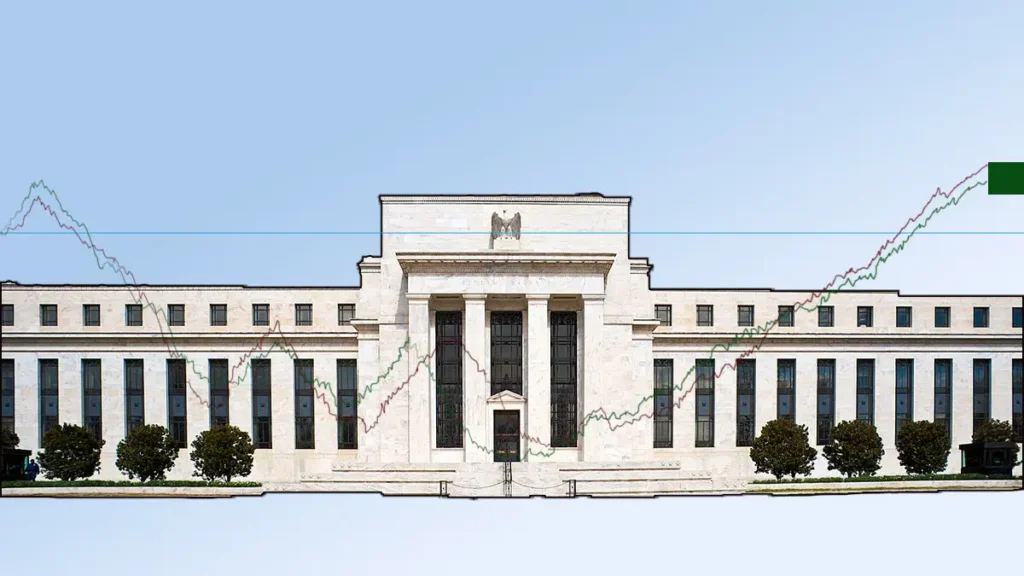The US 10-year treasury yields witnessed a significant milestone as they surged past the formidable 5% mark.
The surge in yields was marked as noteworthy, as it was the first time such levels had been reached in 16 years since the year 2007.
This surge in 10-year treasury yields was further fueled by the echoes of the Federal Reserve’s unwavering commitment to its hawkish stance.
FED officials are firmly signaling their intention to implement more rate hikes before the year’s end, though Powell signaled there are no rate hikes planned for November.
The ripple effects of this development extended far and wide, casting a shadow over financial markets and setting a 16-year high benchmark 10-year treasury yields.
Following its momentous rise above 5%, the benchmark yield did see a slight retreat from that peak.
Yet it left a profound mark by recording its most significant weekly surge since April 2022.
The resounding influence of robust economic data predominantly drove this surge. As a result, the 10-year treasury yields were propelled upward by nearly 30 basis points within a single week.
Powell’s inflation concerns and monetary policy
Just last week, Federal Reserve Chair Jerome Powell delivered a stark assessment of the United States’ ongoing inflation woes.
He asserted that inflation rates continue to linger at uncomfortably high levels.
Powell’s message conveyed that achieving the Federal Reserve’s target of 2% inflation might necessitate a deliberate slowdown in both economic growth and job market expansion.
These remarks by Powell were seen as a notable departure from market expectations that had assumed the US central bank was nearing the conclusion of its series of rate hikes.
Powell expressed his vigilance regarding recent data illustrating the robustness of economic expansion and the sustained demand for employment.
He indicated that if there were more signs of ongoing growth beyond expected levels.
If the labor market’s tight conditions no longer improve, it might jeopardize advancements in controlling inflation and necessitate additional adjustments in monetary policy.
This statement was made during Powell’s address to the Economic Club of New York.
Global bond sell-off sparks Eurozone Yield surge
On Monday, yields for Eurozone government bonds went up significantly due to a global bond market sell-off.
This pushed the 10-year treasury yields to their highest level in 16 years.
This surge in US bond yields is part of an ongoing sell-off in government bond markets, driven by investors believing that central banks, especially in the United States, will maintain high interest rates.
Additionally, an increase in bond supply and expanding term premia have contributed to this trend.
Rising 10-year treasury yields, inflation concerns, and geopolitical tensions impact markets
Market experts suggest that the increase in 10-year treasury yields is linked to the prevailing pattern of rising interest rates.
This upward trajectory is considered an indirect indication of stubborn inflation and the expectation of a possible economic deceleration.
Consequently, borrowing costs are on the rise as a result.
Moreover, the upsurge in bond yields can be attributed to an expanding bond supply and heightened levels of macroeconomic and geopolitical uncertainty.
Moreover, the potential escalation of the conflict between Israel and the Islamist group Hamas into a broader regional confrontation is a source of concern for the markets.
On Monday, Israeli airstrikes heavily impacted Gaza, while the United States deployed additional military resources to the region.
The US dollar index remained stable at 106.1, the euro showed a 0.1% increase at $1.06075, and the British pound held steady at $1.2170.
The consistent increase in long-term US Treasury yields has bolstered the US dollar’s strength.
Read More: US Bond Market Needs a Dot-Plot Rescue to Avoid a Third Decline
